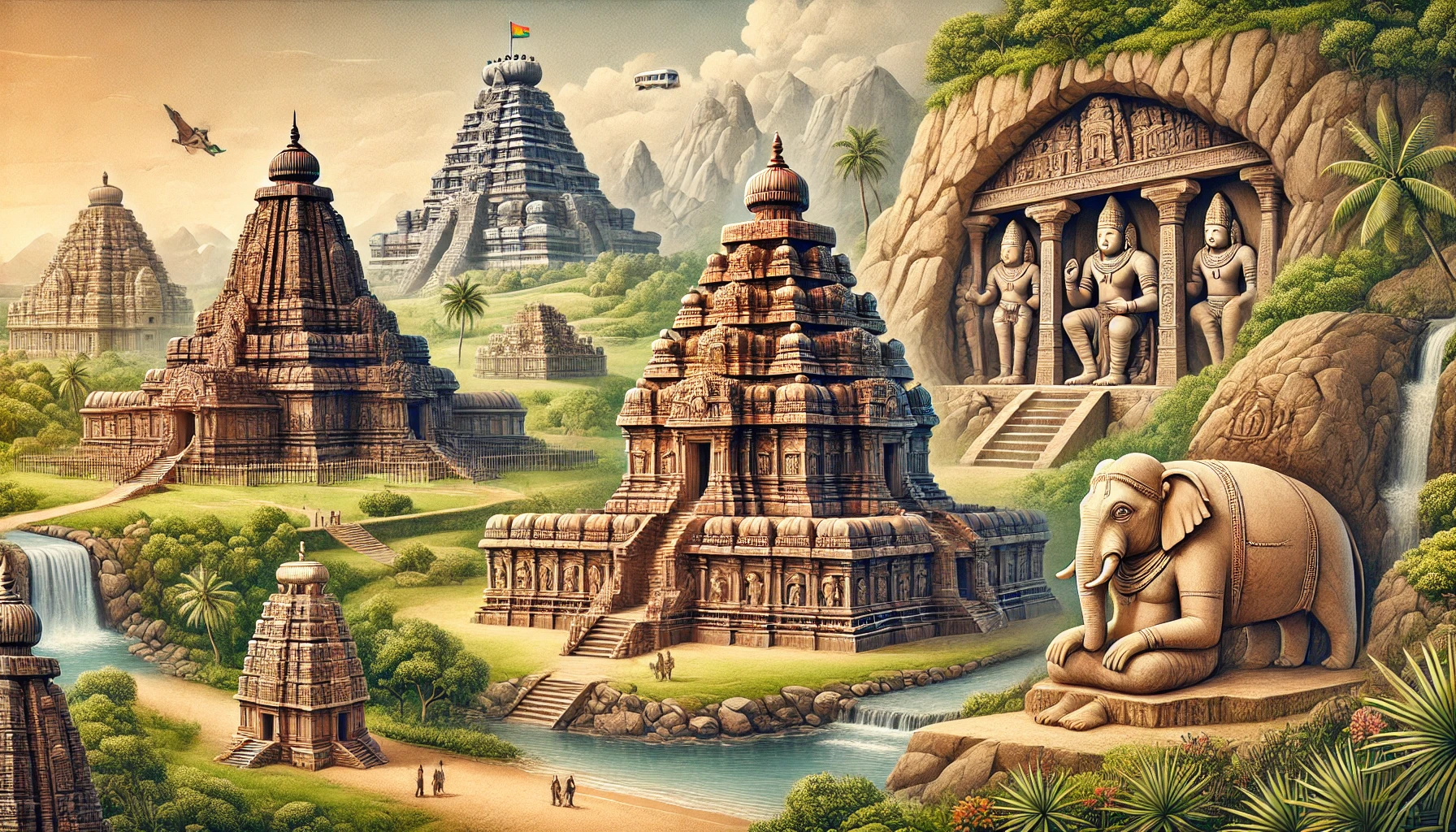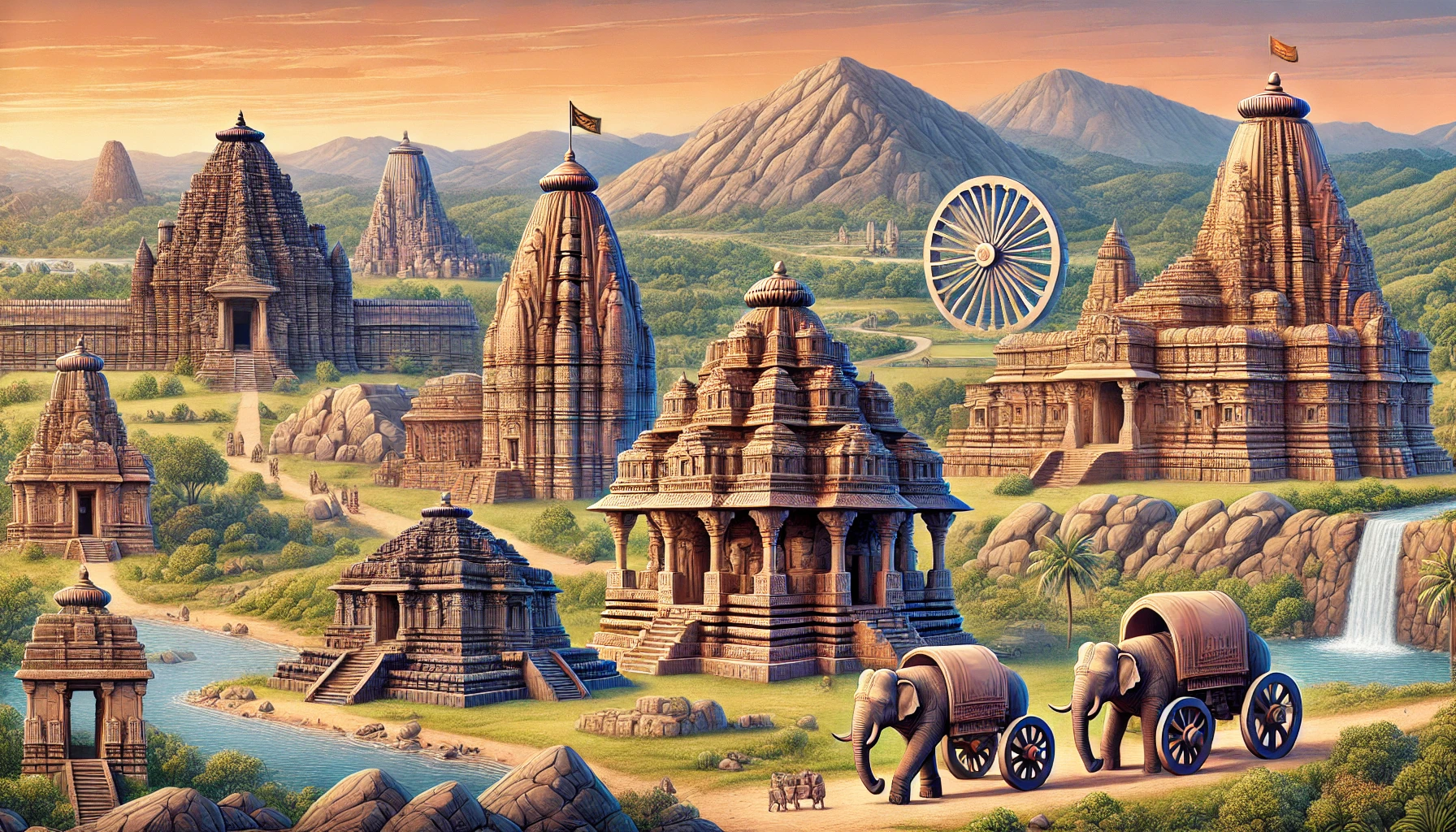India is home to several world heritage sites in India, showcasing the country’s rich history, culture, and natural beauty. These sites, recognized by UNESCO, highlight the immense value of India’s diverse heritage. From ancient temples to majestic natural landscapes, these sites form an integral part of the nation’s identity.
- How many world heritage sites in India? There are currently 40 recognized sites.
- The first world heritage site in India was the Ajanta Caves, added in 1983.
- The no of world heritage sites in India has steadily increased, reflecting the country’s growing importance in global heritage.
| GS Paper | General Studies Paper I |
| Topics for UPSC Prelims | Types of heritage sites, UNESCO criteria, Major sites in India |
| Topics for UPSC Mains | Significance for India’s heritage, Challenges in preservation, Role in tourism and economy |
Cultural UNESCO World Heritage Sites in India
India’s cultural heritage is vast, and its UNESCO heritage sites in India reflect that richness. These sites range from ancient civilizations to intricate temple complexes. They hold significant historical, architectural, and cultural value.
Ajanta and Ellora Caves
The first world heritage site in India, Ajanta Caves, represents Buddhist art and architecture. It was declared a heritage site in 1983. Along with Ellora Caves, these monuments display India’s religious history and artistic achievements. They contain rock-cut temples that have existed for centuries.
Taj Mahal
Taj Mahal is one of the most famous heritage sites in India. Recognized for its architectural beauty, the Taj Mahal attracts millions of visitors each year. It was built by Mughal Emperor Shah Jahan in memory of his wife Mumtaz Mahal. The white marble structure symbolizes eternal love and is an excellent example of Mughal architecture.
Red Fort Complex
Another significant site among UNESCO world heritage sites in India is the Red Fort Complex in Delhi. The 17th-century fort was built by Emperor Shah Jahan. The fort stands as a symbol of India’s history, representing the rise and fall of empires. It became a World Heritage Site in 2007.

Natural UNESCO World Heritage Sites in India
India is not only rich in cultural heritage but also boasts several natural heritage sites in India. These natural sites are recognized for their unique biodiversity, landscapes, and ecological importance.
Kaziranga National Park
Kaziranga National Park is one of the most notable UNESCO world heritage sites in India. Located in Assam, it is home to the endangered one-horned rhinoceros. The park also protects a range of species, making it one of the world’s most important biodiversity hotspots.
Western Ghats
The Western Ghats, a mountain range running along India’s west coast, is another significant world heritage site in India. It is home to an array of flora and fauna, many of which are endemic to the region. This natural site has been listed for its ecological importance.
Significance of World Heritage Sites in India
The heritage sites in India play an essential role in the country’s cultural and environmental preservation. These sites act as living museums, allowing people to connect with India’s past and its natural beauty. They also support the tourism industry, which brings economic benefits to local communities.
Cultural Importance
The cultural heritage sites in India provide insight into the country’s religious, architectural, and social evolution. Sites like the Sun Temple of Konark and the Mahabalipuram monuments demonstrate ancient India’s architectural genius and artistic flair. They are critical for understanding India’s religious diversity and historical development.
Environmental and Ecological Significance
The natural UNESCO heritage sites in India are vital for biodiversity conservation. Sites like the Sundarbans and Manas Wildlife Sanctuary help protect endangered species and fragile ecosystems. These sites contribute to global efforts to preserve natural heritage.

Challenges in Preserving World Heritage Sites
Despite the recognition and protection provided by UNESCO, world heritage sites in India face numerous challenges. Urbanization, climate change, and lack of proper management can pose threats to these irreplaceable landmarks.
Urbanization and Development Pressures
Several UNESCO heritage sites in India are located near urban areas, which leads to the risk of encroachment and pollution. For example, the Taj Mahal faces threats from air pollution, which affects the monument’s white marble facade. Effective management is needed to balance development with preservation.
Climate Change
Climate change is another serious threat to both cultural and natural world heritage sites in India. Rising temperatures and changing weather patterns can damage fragile ecosystems in natural heritage sites like the Sundarbans. Cultural sites are also at risk due to increasing humidity and unpredictable weather conditions.
Conclusion
In conclusion, world heritage sites in India represent the nation’s diverse cultural and natural heritage. These sites serve as a testament to India’s historical, architectural, and environmental significance. From the first heritage site in India to the increasing no of world heritage sites in India, the country continues to play a vital role in global heritage preservation.
| World Heritage Sites in India UPSC Notes |
| 1. India is home to 40 UNESCO World Heritage Sites, recognized for their cultural and natural significance. 2. Ajanta Caves, the first World Heritage Site in India, showcases Buddhist art and architecture from centuries ago. 3. The Taj Mahal, a symbol of love, is a major World Heritage Site, known for its stunning Mughal architecture. 4. Natural sites like Kaziranga National Park and the Western Ghats are vital for biodiversity conservation in India. 5. World Heritage Sites in India contribute to tourism and play a key role in preserving cultural and natural heritage. 6. Urbanization and climate change pose significant threats to India’s World Heritage Sites, requiring proper management and protection efforts. |


